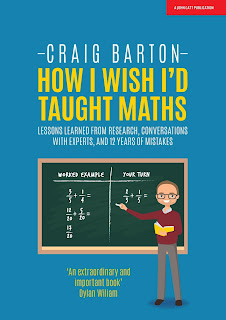Problem #1. A misunderstanding of the role of knowledge leads down the path of technological dependency.
Pyramid thinking has led to this type of "21st Century Learning" discourse:
We remove the human element from "remembering", and indeed as we increasingly see in student work, there is an over reliance on Google and Wikipedia for analysis and evaluation. I don't think we are far off from the next phase where Google Assistant, Siri and other tools do most of this thinking for us,
 |
| ... |
and finally it we just throw in the towel:
Yes, this may be an exaggeration, but people are now seriously considering that sophisticated software, built on a large knowledge depository (hmm, funny that) will soon be as creative, if not more so, than humans. Anyone who thinks by focusing on creativity we will "future proof" students is in for a rude shock as the AI software goes to the next level.
Problem #2 : Thinking there is just one pyramid
Pyramid thinking can quickly become monolithic - the concept that there is one, all embracing pyramid which integrates all knowledge and all cognitive processes.
 |
| The ONE TRUE "integrated" pyramid of cognition |
In this view, there is one large pool of knowledge to "remember" and learning how to "understand", "evaluate", "create" is a transferable skill that can be applied to all the knowledge in the "one pyramid". All the cognitive science papers I have read suggest this is just not true. Developing creative skills in music isn't going make me a creative essay writer or a creative mathematician. Both knowledge and cognitive skills are domain specific.
Problem #3 : The pyramid completely misrepresents the revised Bloom's Taxonomy
The 2001 revision of Bloom's Taxonomy by Anderson & Krathwohl involved so much more than changing the words from nouns to verbs. The 2001 work corrected a major flaw in Bloom's original taxonomy : the conflation of knowledge (bottom level of the pyramid) and cognitive processes (the rest of the pyramid).
 |
| Two explicitly delineated dimensions in the 2001 revised Bloom's Taxonomy. Nothing like a pyramid! |
The pyramid representation only provides a one-dimensional view of the new taxonomy, completely omitting the knowledge dimension. Without the knowledge dimension explicitly in view, we are at risk of making category errors focusing too much on the development of skills at the expense of building knowledge.
 |
| Pyramids are just so 26th Century BC it's time for a new diagram. |
In terms of graphic design and correctness, this diagram is far better:
 |
| https://teachingcommons.lakeheadu.ca/blooms-taxonomy-21st-century-learners |
In my next and final post on this topic, I'll consider how Bloom's (revised) Taxonomy and indeed Bloom himself, is worthy of being considered a key player in the development of the Knowledge Based Curriculum.
















